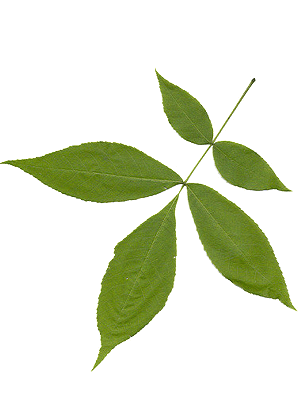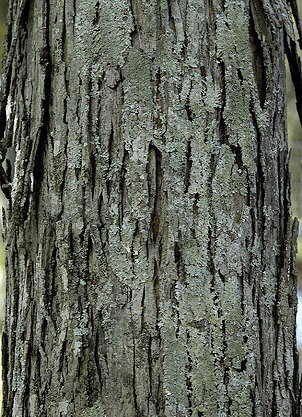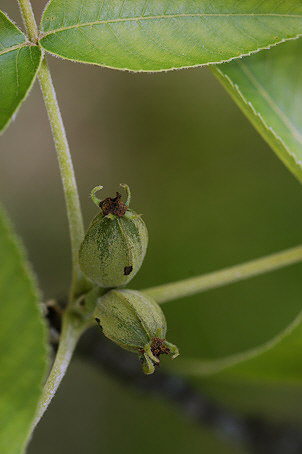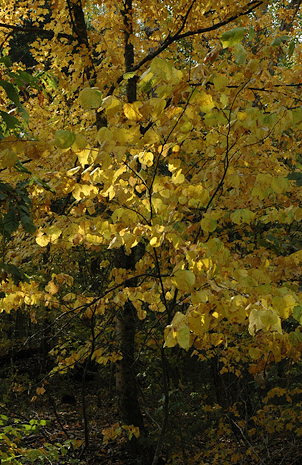| |
|
| |
 |
| |
Shagbark Hickory Leaf |
Identification:
In fall the leaves of the Shagbark Hickory will turn a golden
brown. Each leaf is composed of 5-7 leaflets.
The leaves are alternate,
toothed and
pinnately
compound.
The leaves are smooth to lightly hairy above, and hairy below. Total length of the leaves vary from 8 inches to
16 inches. With a hand lens you can see fine hairs
along the margins of the leaves (margins are
ciliate), a characteristic that distinguishes
Shagbark Hickories from all other hickories. As the tree loses
its leaves, you may be able to get a better look at the alternate
branching on this species. Although Hickories and Ashes have
leaves that are similar, Hickories have alternate branching
while Ashes have opposite branching. You will get
a chance to see the opposite branching of the ashes at Station Two.
| |
|
 |
|
|
Shagbark Hickory Bark |
True to its name, the bark of the
Shagbark Hickory is broken into shaggy scales that are attached to
each other by their edges. On large trees these scales can be
over a foot long and six to eight inches wide. The scales
start to form when the tree's diameter is from 4 to eight inches.
Lichen is often seen on the scales, and on older trees the scales
can be large enough that small animals can find shelter beneath
them. Some species of bats have been observed doing this, and
treefrogs are said to use them as well.
The twigs of the Shagbark Hickory
are stout and dark reddish brown with orange
lenticels.
The leaf scars
are heart-shaped.
| |
|
| |
 |
| |
Developing Nuts |
In the fall you can often see the
fruit of the Shagbark Hickory. The nuts are greenish when
young and brown to brown-black when mature. The husks
are thick and four-ribbed. The mature nuts are
around 2 inches in diameter. The meat is light-brown, sweet
and delicious, and has provided an important food source for both
animals and humans. In
the 18th century, the naturalist William Bartram wrote
that the Creek Indians pounded the nuts into pieces and boiled them,
from which they extracted a sort of hickory “milk.” He wrote that
the milk, “is an ingredient in most of their cookery, especially
homony and corn cakes.” Later, pioneers cracked and ate the nuts.
The nuts are also an important source of food for many types of
wildlife, including gray squirrels and southern flying squirrels.
In the fall
you may see a pile of broken shells (called a midden) beneath the
tree, evidence that a wild creature has made a meal of the nuts.
Other Uses
and Lore:
Hickory wood burns
quite hot as firewood, and the fuel value of the wood is higher than
any other American wood except locust. The wood is also prized for
smoking country hams and other meats. General Andrew Jackson was
nicknamed “Old Hickory” after one of his men said that he was “tough
as hickory.” Until a tornado destroyed them in 1998, six shagbark
hickories stood as sentinels over Jackson’s grave at the Hermitage.
The Trail From
Station One to Station Two
 |
|
Eastern Redbud Fall Foliage |
From Station
One, the trail continues to climb towards the northwest until you
crest the ridge. At this point the trail splits, and you will
want to take the left fork. Up to this point you have
been walking along an east-facing slope. After you take the
left fork you will be walking along a west-facing slope. From this point the trail
will slowly descend along the side of the ridge to the West Fork of the
Stones River. Immediately after you take the left-hand
fork in the trail, you will be approaching Station Two. It
will be on the left
side of the trail.
|

